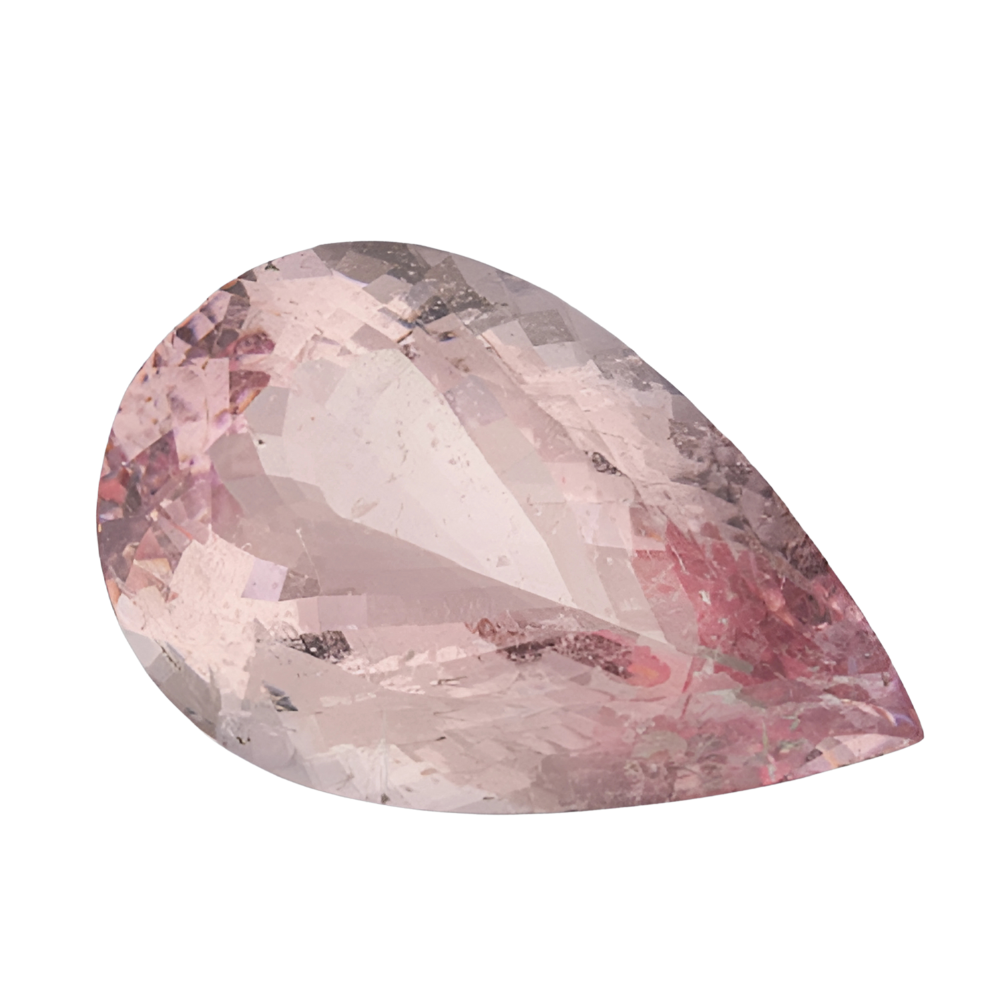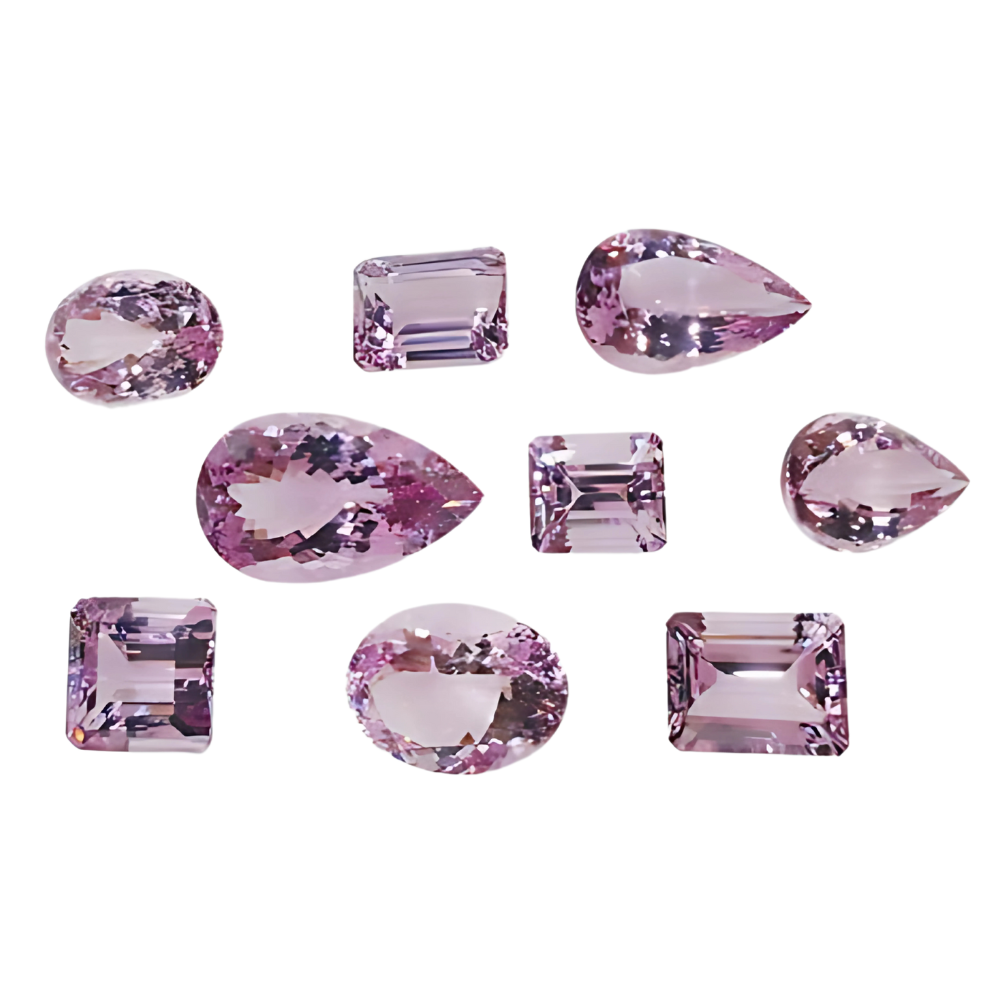Events Attended

JCK
LAS VEGAS
GJX TUCSON SHOW
BANGKOK GEMS AND JEWELERY SHOW
HONGKONG GEMS AND JEWELERY SHOW
Spring 2024 Gems & Gemology
Gem News International

Morganite from Blue Star Gems
Figure 24. The 236.27 ct pear-shaped untreated morganite from old Madagascar stock was designed by Prakash Chand Vijay, who also oversaw the cutting. Photos by Jennifer Stone-Sundberg (left) and Robert Weldon (right). Courtesy of Blue Star Gems.


Gemstone Suites: Radiant Morganites & Brilliant Aquamarines
Figure 25. Left: Suite of morganite from Mozambique ranging from 27.90 ct (the center rectangular step cut) to
92.34 ct (the largest pear). These stones underwent a lengthy heating and electron radiation treatment to bring out
the best color and clarity. Right: Suite of aquamarines from Madagascar. Clockwise from left: 31.88 ct oval brilliant cut, 49.08 ct cushion cut, 35.80 ct rectangular step cut, and 24.51 ct pear brilliant cut. Photos by Prateek
Vijay; courtesy of Blue Star Gems.
Morganite: The Timeless Beauty of a Rare Pink Gemstone
Morganite, a pink gem discovered in 1910 in Madagascar, was identified as a new variety of beryl by George Kunz, who named it in honor of his friend J.P. Morgan. Morganite has since been found in several other countries, most notably Brazil, Mozambique, Afghanistan, China, Russia, and the United States. The most productive mine today is in Minas Gerais, Brazil.
At the GJX show, an extraordinary morganite stood out at the Blue Star Gems (New York City) booth (figure 24). Owner Prakash Chand Vijay indicated that the 236.27 ct stone was from vintage stock from the original morganite mine in Madagascar. This one-of-a-kind untreated stone had a particularly pleasing deep warm pink color and a striking constellation of small inclusions scattered throughout. With Vijay’s expertise in the selection and cutting of stones from Africa, he participated in and oversaw the cutting of this exceptional gem.
Vijay’s daughter, Jyoti Vijaywargi, said that this year they brought more than 100 pieces of attractively colored purplish pink morganite in sizes of over 20 carats each (figure 25, left). These stones came from Mozambique and underwent a lengthy heating and electron irradiation treatment in Germany to bring out the best color and clarity.
The enhancement of morganite color has been shifting from neutron irradiation to electron irradiation, avoiding the risk of a radioactive product (T. Stephan et al., “Irradiation treatment and gamma-ray spectroscopy of morganite,” 37th International Gemmological Conference Proceedings, Tokyo, 2023, pp. 123–125). Vijaywargi noted that due to the large sizes of their morganites, the entire process takes about five years to produce the quality seen, attesting to the value of the material and the patience of the vendor. The treatment itself takes about three and a half years, followed by an additional 18 months to let the stones cool down and be tested before they can be sold. Sometimes the stones do not respond to the treatment, and there is no color improvement at all. To date, there is no pretreatment testing to indicate whether the stones will respond to the treatment, so each run is a financial risk.
In addition to morganite, Blue Star Gems had extensive offerings of aquamarine (figure 25, right)—one of this year’s most popular stones—and tanzanite. The aquamarine comes from Madagascar. Despite global business challenges, the show proved successful for Blue Star Gems, particularly for high-end stones. The company was also able to attract new buyers this year.
Vijaywargi described the recent challenges around the pricing of wholesale versus retail items. On the wholesale side, prices for all goods have increased, yet these price changes have not been reflected at the retail end. As a vendor carrying substantial inventory of rare gemstones, Vijaywargi anticipates an increase in the value of Blue Star’s collection, which will require patience as a seller.
